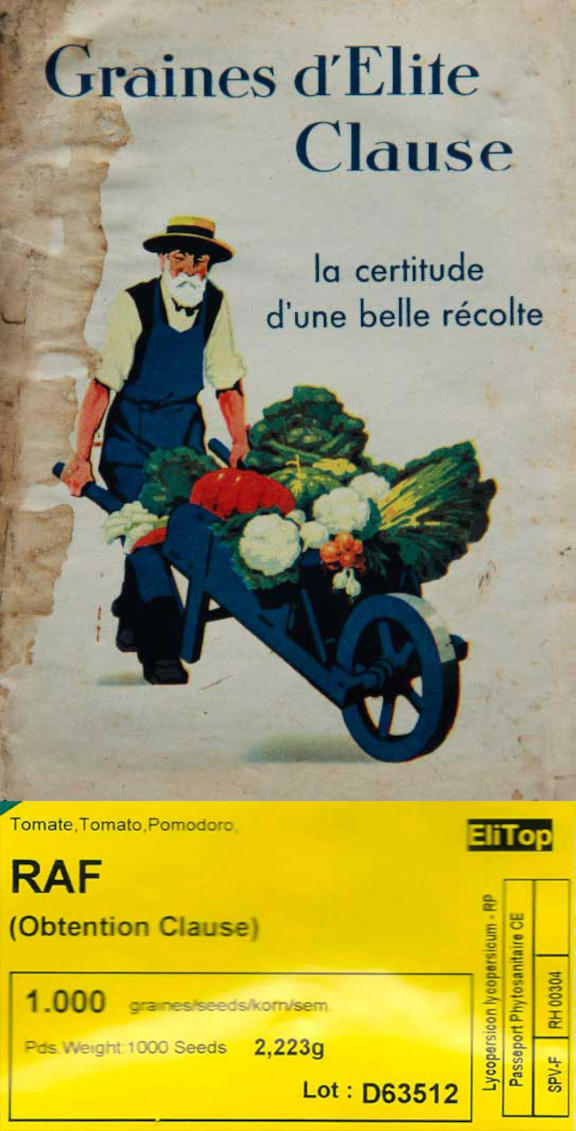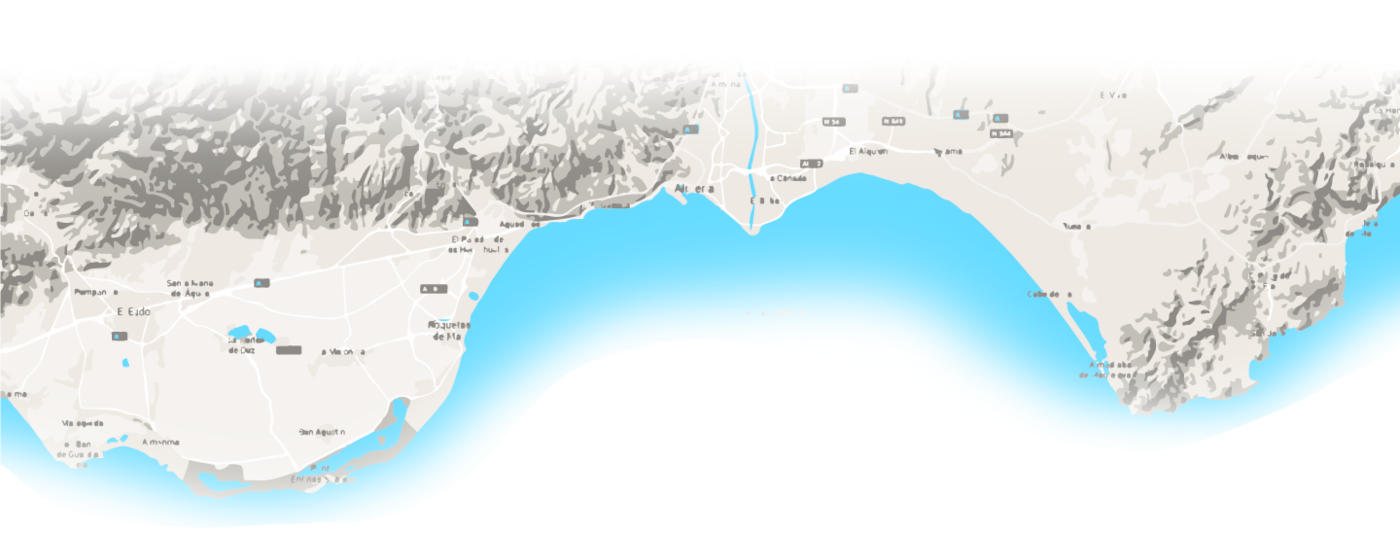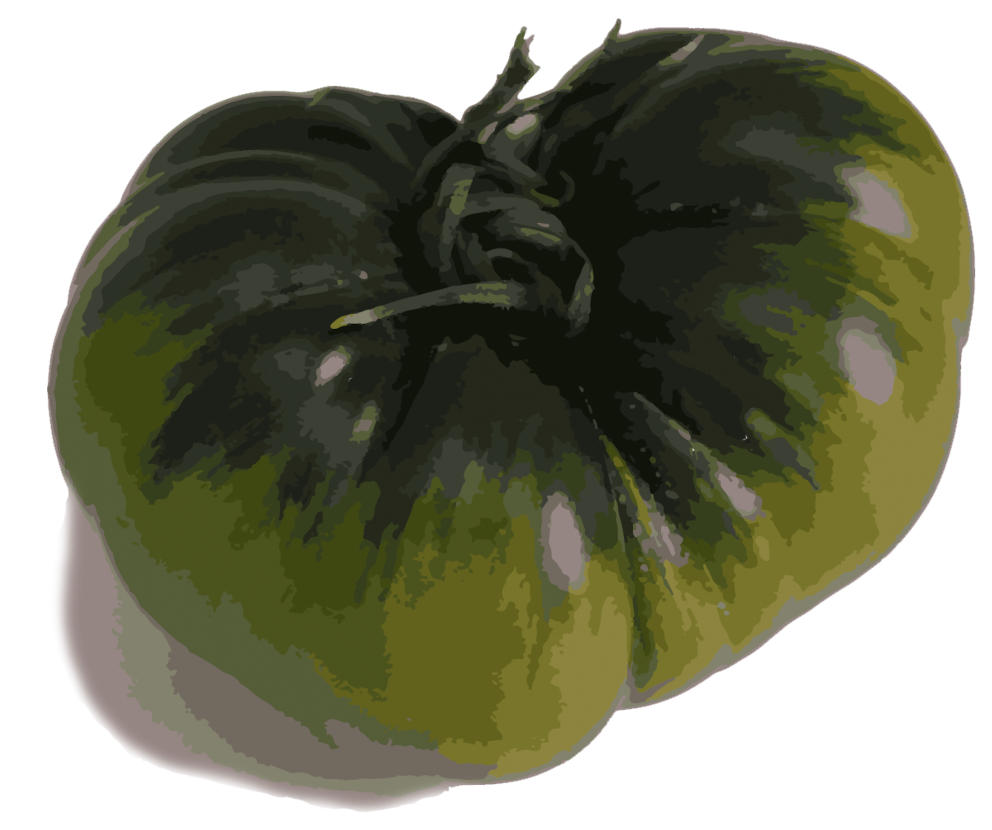What is the origin of the Raf tomato?
The French tomato that has conquered the world from Almería.
In the 1950s, the predominant tomato varieties in Almería were the Marmande and the Muchamiel, two varieties that were characterized by being very low-yield, with a very weak shape and roots, but with a lot of flavor. Of these two varieties, the most appreciated and with the most flavor was the Marmande, with the “French Marmande” variety standing out above all, commonly called by farmers “the Quarantine”.
In the late 1950s, the fungus “Fusarium oxysporum” adapted to the climate and humidity conditions of the Vega de Almería, massively attacking the roots of the Marmande variety and causing huge losses among farmers.
In 1961, the CLAUSE seed company, which owned the patent for one of the French Marmande strains (Marmande Clause 27), decided to find a solution to the problem of the Fusarium fungus by crossing the strain with a resistant South American tomato variety through natural selection. After 7 years of natural selection, a new strain of Marmande tomato was finally developed that was more resistant to Fusarium.
Thus in 1967 the seed company CLAUSE renamed its famous French Marmande with the name RAF, an acronym for Fusarium Resistant.

Nowadays, there are many seeds that try to imitate the authentic Raf tomato. However, their flavour, texture and properties are not comparable to the originals that our family has been selling since its origin.
These are the same Raf tomatoes that our grandparents already grew.
When the first snow falls in Sierra Nevada, the northern winds that circulate between Sierra Alhamilla and Sierra de Gádor enter the Bay of Almería, mixing with the sea breezes of the Mediterranean, providing the areas of La Cañada and El Alquián with a unique and special climate for growing Raf tomatoes.

Where is the Raf tomato grown?
The Bay of Almeria, a perfect place to grow Raf tomatoes.
Although the RAF was born in France, this tomato emerged as an alternative to the Marmande variety, and its objective was to be introduced in the southeast of Spain.
En 1967 empezó su introducción, fundamentalmente en Alicante y Murcia, pero los resultados no fueron los esperados, ya que el tomate regado con aguas dulces de esas zonas no tuvo una gran aceptación.
En 1968, y casi de casualidad, técnicos de CLAUSE desplazados en Almería decidieron dejar unas muestras de semillas de RAF a algunos agricultores de la zona de la Bahía de Almería, entre ellos a “Paca y Pepe”, nuestros padres, que no dudaron en probar estas semillas en la misma finca donde hoy cultivamos nuestros tomates Raf. Esa casualidad se tornó en éxito, cuando descubrieron que, con las condiciones diferentes y especiales de esta zona con aguas saladas y vientos suaves del norte, el sabor, la textura y su dulzor eran simplemente insuperables.
Fue entonces, y tras varios ensayos, cuando se descubrió que este tomate tenía especial dependencia a determinadas condiciones de suelo, agua y clima, que solo se daban en ciertas zonas de la Bahía de Almería.

¿Cómo ha evolucionado el tomate Raf?
Ha evolucionado la picaresca, pero el tomate Raf sigue siendo el mismo.
Para entender la evolución del RAF como “marca”, hay que entender lo especial de este tomate.
RAF solo hay uno, y es especial, ya que solo se puede cultivar en unas pocas zonas de Almería, lo que desde su origen le dio esa etiqueta de tomate exclusivo y con muy baja producción.
Así en los años 90 y con la aparición de las variedades híbridas de larga vida (longlive) la mayoría de agricultores se pasaron a estas variedades, quedando el RAF como un tomate minoritario. Una de estas variedades fue el “DELIZIA” el primer híbrido de RAF que rápidamente se extendió por todo el litoral almeriense, y cuyo éxito derivó en la aparición de muchas más variedades de tomate híbridas o imitaciones de RAF.
Como tomate RAF auténtico hay muy poco, y debido a los intereses comerciales de agricultores y comercializadoras, todavía hoy, no existe una legislación clara que regule y obligue a etiquetar cada tomate con el nombre de su variedad, apareciendo en los mercados todos bajo el nombre de tomate RAF, aunque en realidad el auténtico es exactamente el mismo que en 1969 empezaron a cultivar nuestros padres, Paca y Pepe.
